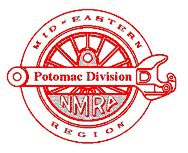Cam Green’s Maine Central circa 1980
January 18, 2020

by Lee Stoermer
It's March of 2017. You have some space and an idea. By November 2018
that idea is coming to life. Then by November 2019 your idea is
functioning and is into fine tuning and decorating. Some model
railroaders take years to get from their design phase to running the
first train. Cam Green has gone from a raw layout room that day in March
2017 to an operations-themed railroad model with significant amounts of
scenery in just over two years. He attributes this to having planned his
layout over time before actually deciding on a firm concept and
acquiring the space. Dedicating time towards the layout, even 30 minutes
in the morning before work, or in small batches each evening, was
instrumental in the steady progress.
Cam grew up in the area he models in Maine, centered around Yarmouth and
Augusta, and says he has fond memories of being trackside in the area.
He uses historical records, photos and books to get that recognizable
look. Most town trackage is very close as to placement and utilization.
While it may not be completely exact, he goes for the close-enough feel
that you can easily tell where it is, if you are familiar with it.
Cam's HO Scale layout is 28 feet by 48 feet in an L shape, located in
his finished basement. Flooring is in place utilizing interlocking
rubber floor mats. Benchwork is typical box girder sections of 1"x3" and
1"x4" lumber, with shelving L brackets used for the upper level
supports. Lowest level is at 36" and the upper level tops out at 52".
These heights were selected for personal comfort based on visiting other
layouts. A helix is used to travel between the two operating levels and
a lower level staging yard. Lighting is by 4K LED light strips that are
mounted around the room, giving a well- lit, even coverage.
Roadbed is a combination of a few different materials. In some yard
areas, some of the interlocking floor matting that was leftover was used
as sub- roadbed, then cork roadbed placed on it. This does give a
definite improvement in sound deadening while not letting good product
go to waste.
Track is a mix of code 83 Atlas, Micro Engineering and Peco brands,
secured with DAP clear adhesive. Cam has selected Micro Engineering Code
83 turnouts for their over center spring action, without powering any
frogs, preferring to keep electrical issues to a minimum. There is only
one powered turnout which is located at a remote spot where reaching in
is troublesome and could cause damage to scenery or rolling stock.
Operations are conducted using car cards, which are still being phased
into use and massaged to balance car utilization around the layout.
Eight single person crews and a dispatcher can keep busy for several
hours. A future potential conversion to 'Ship-It' is being considered.
Command Control system of choice is the DCC system by Digitrax. Many
locomotives have sound installed in them. Rolling stock and locomotives
all operate smoothly. All rolling stock and locomotives are properly
serviced before being placed into operation. Checking weight, wheels
checked for proper gauge and coupler operation are all key. Kadee #5
couplers are added as they are less finicky than semi scale versions
which is a definite plus for an operations themed layout. All plastic
clone couplers are also replaced as they do not tend to hold up as well
in operations, or with Cam's average train lengths of 20 plus cars.
Several operating sessions have been held which continues to help hone
operations, both in the physical plant as well as the operating scheme.
Rolling stock is a varied mix of Atlas, Walthers and others, with
Accurail being among his favorite for its detail level and ability to
stand up to ops sessions. Most locomotives are Atlas RS11, GP 38 and
GP7, as found on MEC rosters and paint schemes. These have been found to
have a better level of pulling power and consistent gearing. One other
item is weathering. About 50% of what is already in use is weathered and
Cam is striving to increase that percentage before adding anything new
onto the layout.
Scenery is currently about 30% complete. Although by the time I write
this, and then again by the time you are read this, I suspect that
percentage will have grown again. Several areas of lower level scenery
were completed first, then upper levels. Cam has decided it's better to
finish the upper level areas with the messier parts of scenery as he has
learned it is easier to work on the upper level with a clear lower level
and no structures or trees in the way to prevent damage or falling blobs
of plaster, as well as to avoid having to cover them all up. Scenery is
typical mix of hydrocal, plaster gauze, foam and static grass. Water is
done with gloss mod podge in several layers. Backgrounds are
self-painted tree lines by dabbing brush or sponges in varying shades,
thereby giving an impression without any details. Some photos may be
added for structures in areas as desired.
While Cam's era of the of summer 1980 (1976-1984 is his range) makes for
an all diesel fleet, he has mentioned that the railroad did recently
acquire a steam locomotive, which has proven to be a bit finicky on some
small pieces of the otherwise excellent trackwork. Some minor
adjustments to the locomotive and trackwork should iron this out. This
steam locomotive is expected to be placed into service on the layout as
a future excursion service.
Besides the potential electronic switch list program, the future looks
for continued scenery and structures, many of which need either scratch
built or significant kitbashing. There are a few track realignment
programs planned as any railroad realizes during changes in customers
needs. An expansion is also contemplated, pending approval of the right
of way negotiations, into another area of the basement.
We've included some photos from Cam's layout with this open house
review. But be careful, because if you don't have photos to remember
what his layout looks like today, should you visit it next week or
month, you may not recognize it from the rapid pace of continued
progress. A recurring comment repeatedly heard from attendees was, "All
this in two years?" Why yes, yes indeed.
Photos by Lee Stoermer (LS) or Wayland Moore (WM)






